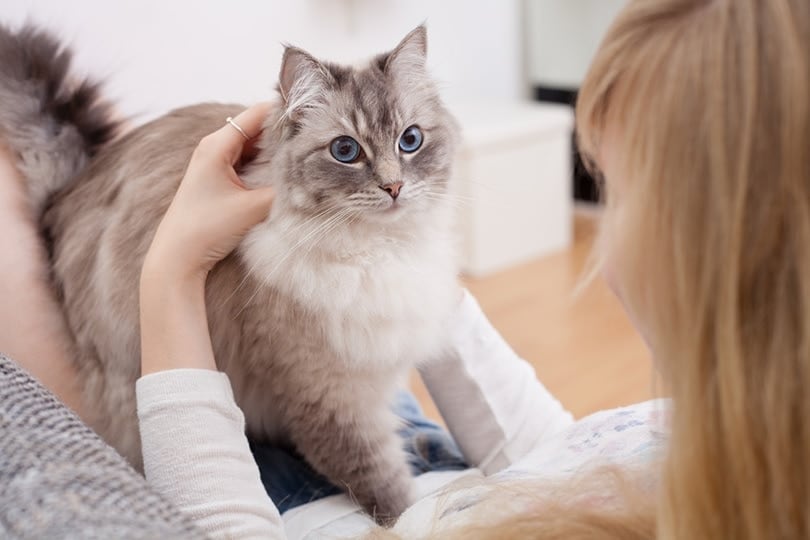Lions and tigers are big cats with big teeth and big claws. Are the beloved kitties that curl up into fluff balls on the back of the couch, attack fake mice, get silly on catnip, and purr when they are happy related to the big, vicious cats we see on TV? Yes, they can be, and they are!
The scientific relationship between big cats and domesticated house cats is proven positive in their DNA and physical features. Let’s look at the science, how they were first domesticated, and some similarities.
The Felidae Family
The domestic cats we know today are part of the scientific “family” called Felidae. The word feline, which we often use when referring to our kitties, comes from this scientific term. This family also includes such big cats as lions, tigers, cheetahs, and leopards, as well as small cats, such as the wildcat of Eurasia or the ocelot of Central America.
Predatory cats began evolving over 10 million years ago. Because of this long evolution and the changing sea levels and land masses over the Earth’s history, cats were able to migrate and evolve differently to adapt to the various environments they found themselves in. Tigers developed stripes to blend in with the trees and tall grasses when they hunted alone and male lions grew manes to show their physical fitness and ability to lead and protect a pride (or group of lions).
Domesticated Cats
So how did cats become domesticated? When humans started settling down to farm grain, it caused an increase in field mice. About 10,000 years ago, when we began storing grain for long winters or droughts, cats started coming closer to human settlements where mice were feeding on stored grain. Over many years, cats became more comfortable with humans, making it easier for humans to domesticate cats to help keep mice away.
There is evidence of cats living side-by-side with humans as far back as 5,000 to 8,000 years ago in the Fertile Crescent, or the modern-day Middle East. In ancient Egypt, cats became god-like. They were wonderful companions and provided pest control, just as they do today, and they offered protection in the afterlife. Many were mummified to accompany their owners on their journey.

Similarities Between Housecats and “Big” Cats
Cats around the world can look quite different. Just try comparing your adorable ragamuffin to a black panther! However, all cats of the Felidae family that started evolving 10 million years ago have very similar characteristics. Let’s take a look at a few of them.
- Some big cats can purr just like your little one. Your cat probably can’t roar, though.
- Big cats rub their heads on things, too. This scent marking helps others in the area know what’s theirs.
- The scent isn’t the only way of marking their territory. Leaving scratches on things that belong to them is an instinct handed down from the big cats.
- All cats are nocturnal, which is why your cat loves to play at night.
- They have excellent hearing and great vision to help stalk their prey, even at a distance or at night. Cats like to make a game of stalking their prey.
- There are five toes on their front and four on their hind paws. They walk on their toes to stay quiet as they hunt.
- Cats are obligate carnivores, meaning they must eat meat to get all the nutrients they require to stay healthy.
Final Thoughts
So, there you have it! Your favorite feline is actually related to the skilled predators of the African plains or the Amazon jungle. We know you will never see them the same way again, so make playtime with them even more fun by engaging their instincts. Use toys that encourage them to stalk their prey, try playing at night in a dark room, or even play a game of hide and seek. You might just have more fun than they do!
Featured Image Credit: Pixabay














